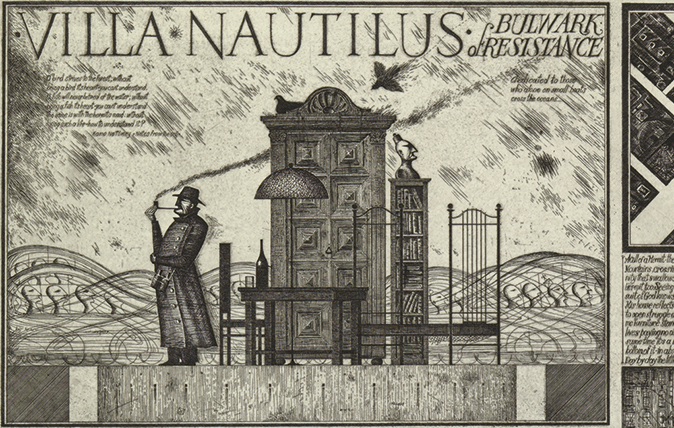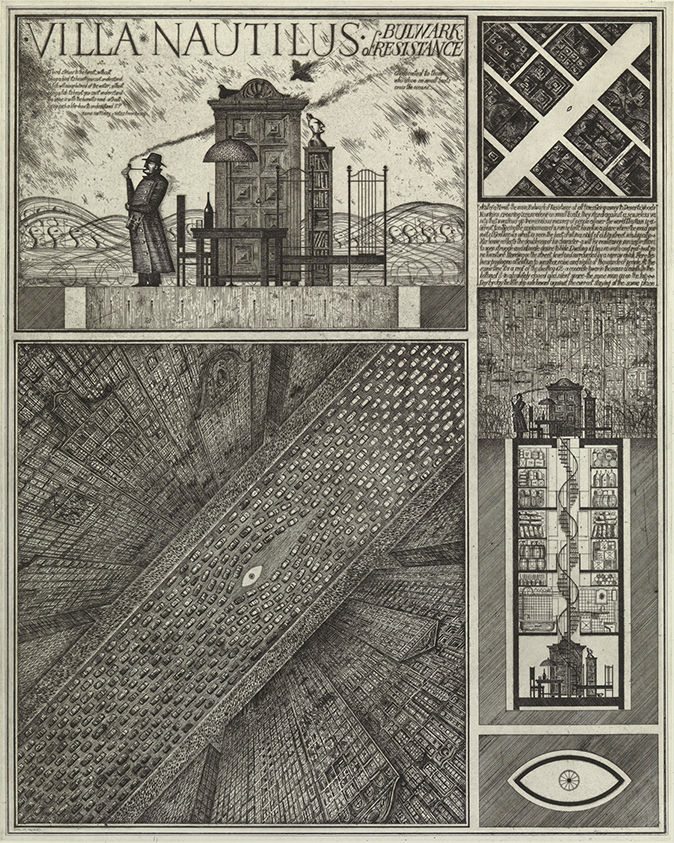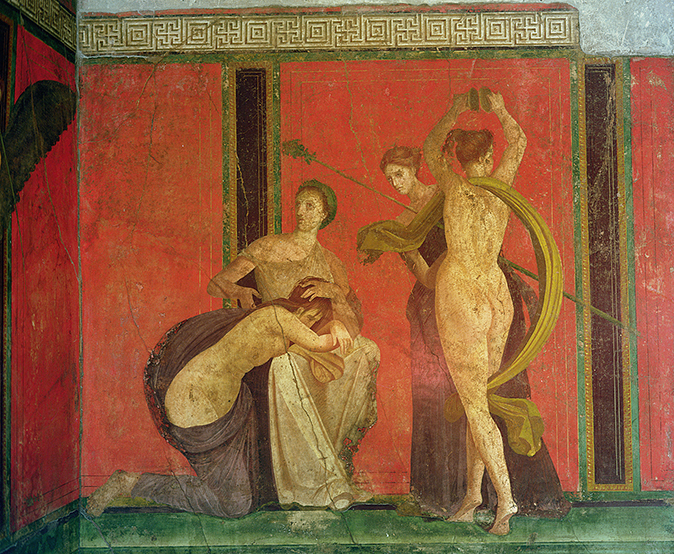My favourite painting: Clementine Cecil
'Paper Architecture is by its very nature romantic: dream projects that will never exist'



Villa Nautilus, 1990, Alexander Brodsky (b.1955) and Ilya Utkin (b.1955), 43in by 31¾in, etching
Clementine Cecil says: I love Brodsky and Utkin’s etchings – their wit, melancholy and intricate fantasy. Paper Architecture is by its very nature romantic: dream projects that will never exist. Here, the city becomes the sea and the hermit’s house both a “Bulwark of Resistance” and a giant eye when seen from above. It is certainly the most visible hermitage I have ever seen, but the blind mass of the city doesn’t seem to notice it. The hermit’s house “reflects the doubleness of his character – a will for resistance an aspiration to open struggle and intimate desire to hide”. As a city-dweller, I relate to this.
Clementine Cecil is the Director of Pushkin House
John McEwen comments on Villa Nautilus: In 1957, Soviet leader Khrushchev outlawed architectural decoration and abolished the Soviet Academy of Architecture in favour of indiscriminate mass housing. By the late 1970s, this sterile architectural period had led some students at the surviving Moscow Institute of Architecture to vent their frustrated imaginations by designing fantastic buildings on paper. After graduation, most of these students abandoned architecture.
Alexander Brodsky, Ilya Utkin and a few others persisted. They worked on dismal public schemes, but, in the evenings and weekends, they continued to realise their dreams as ‘paper architects’, a term first sarcastically applied to avant-garde architects after Stalin’s Socialist Realist diktat in the 1930s.
The new ‘paper architects’ had a more positive role. Their work was a protest and thus can be seen as contributing to the glasnost reformation. Their drawings were distinguished by detail and frequently by practical considerations and historical references – here, in Villa Nautilus, to the vertiginous visions of the Futurist architect Sant’Elia, also famed for unrealised drawings.
In particular, they gained an international reputation by entering and winning art competitions outside the USSR. Frustration as architects led to success as artists. The year of the USSR’s dissolution in 1989, Mr Brodsky visited New York for the first time at the invitation of the East Meets West organisation. In 1993, he and Mr Utkin stopped working together. Mr Brodsky began to exhibit installations. They were well received, but disappointed commercially. He has subsequently followed a dual career as an architect and artist, his buildings less radical than his imaginative projects.
Sign up for the Country Life Newsletter
Exquisite houses, the beauty of Nature, and how to get the most from your life, straight to your inbox.
‘101st km—Further and Everywhere’, a pop-up pavilion commissioned by Pushkin House and Mr Brodsky, and curated by Markus Lähteenmäki, is in Bloomsbury Square Gardens, London WC1, as part of the Bloomsbury Festival from October 19 to November 10 (entrance free)
My favourite painting: Christopher Brickell
'This is and has been my favourite painting, now and for many years past.'

My favourite painting: Peter Murray
'It is a work that constantly changes, always appealing, to respond to my mood and thoughts.'

My favourite painting: Michael Hulls
'It’s painting not as an object to hang on a wall, but the wall itself.'
Country Life is unlike any other magazine: the only glossy weekly on the newsstand and the only magazine that has been guest-edited by HRH The King not once, but twice. It is a celebration of modern rural life and all its diverse joys and pleasures — that was first published in Queen Victoria's Diamond Jubilee year. Our eclectic mixture of witty and informative content — from the most up-to-date property news and commentary and a coveted glimpse inside some of the UK's best houses and gardens, to gardening, the arts and interior design, written by experts in their field — still cannot be found in print or online, anywhere else.
-
 About time: The fastest and slowest moving housing markets revealed
About time: The fastest and slowest moving housing markets revealedNew research by Zoopla has shown where it's easy to sell and where it will take quite a while to find a buyer.
By Annabel Dixon
-
 Betty is the first dog to scale all of Scotland’s hundreds of mountains and hills
Betty is the first dog to scale all of Scotland’s hundreds of mountains and hillsFewer than 100 people have ever completed Betty's ‘full house’ of Scottish summits — and she was fuelled by more than 800 hard boiled eggs.
By Annunciata Elwes